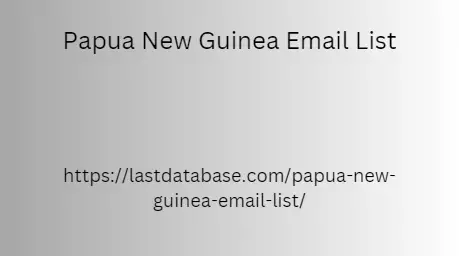Post by huangshi715 on Feb 15, 2024 2:37:25 GMT -6
recently ran this experiment on this blog post and found that using a floating sidebar with sharing buttons increased the rate of sharing by 52%. Floating social shares bar example Still, one school of thought suggests that having no sharing buttons is, paradoxically, optimal for increasing social engagement. The main reason is summed up nicely by this tweet from Smashing Magazine: Another valid argument suggests that seeing a post with a low number of shares reduces a reader’s likelihood to share it (a momentum effect). While this may be true, the opposite is equally true; seeing a post with a large number of shares adds credibility.
The lesson here is don’t take anyone’s word on the best placement or Papua New Guinea Email List plugin to use for your social sharing buttons. Run the experiment to see what works for you. Note: To run this experiment you’ll likely need to tag your social sharing buttons with event tracking parameters in Google Analytics. There are some useful posts and discussions on setting this up here, here and here. Don’t take anyone’s word on best placement for social share buttons. Test for yourself. CLICK TO TWEET 3. Test headlines to increase social CTRs You’ve probably heard by now that the secret to the success of Upworthy, BuzzFeed and Huffington Post is their focus on split testing their headlines.

Upworthy’s editor-at-large has said that before publishing an article, every writer at Upworthy has to come up with at least 25 different headline variations to test. I recently discovered the power of this tactic in a really strange way. I wrote a blog post originally titled, “How Six Popular Blogs Grew to Millions of Visitors in Less Than 2 Years.” I had put my back into this post and was pleased to see it go live. But two weeks later it had about 50 shares, which I was gutted about. After all, I had probably spent a good 15-20 hours researching and writing the post – only 2.5 shares per hour of writing! Fortunately, I had just installed a plugin called WP Title Split Tester, which does exactly what it says on the tin.
The lesson here is don’t take anyone’s word on the best placement or Papua New Guinea Email List plugin to use for your social sharing buttons. Run the experiment to see what works for you. Note: To run this experiment you’ll likely need to tag your social sharing buttons with event tracking parameters in Google Analytics. There are some useful posts and discussions on setting this up here, here and here. Don’t take anyone’s word on best placement for social share buttons. Test for yourself. CLICK TO TWEET 3. Test headlines to increase social CTRs You’ve probably heard by now that the secret to the success of Upworthy, BuzzFeed and Huffington Post is their focus on split testing their headlines.

Upworthy’s editor-at-large has said that before publishing an article, every writer at Upworthy has to come up with at least 25 different headline variations to test. I recently discovered the power of this tactic in a really strange way. I wrote a blog post originally titled, “How Six Popular Blogs Grew to Millions of Visitors in Less Than 2 Years.” I had put my back into this post and was pleased to see it go live. But two weeks later it had about 50 shares, which I was gutted about. After all, I had probably spent a good 15-20 hours researching and writing the post – only 2.5 shares per hour of writing! Fortunately, I had just installed a plugin called WP Title Split Tester, which does exactly what it says on the tin.
